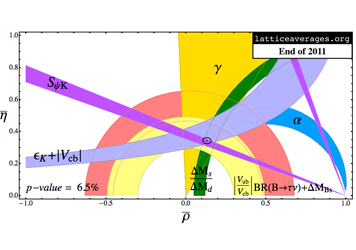 The discovery last year at CERN of the Higgs boson — a particle that may well be responsible for all the mass in the universe — was momentous to physicists everywhere. The revelation of Higgs is critical to validating a nearly five-decade-old fundamental physics theory, known as the Standard Model, which accounts for all known subatomic particles and their interactions. Scientists, meanwhile, continue their search for answers to weighty unexplained physical phenomena such as the existence of dark matter and what happened to all the antimatter since the Big Bang.
The discovery last year at CERN of the Higgs boson — a particle that may well be responsible for all the mass in the universe — was momentous to physicists everywhere. The revelation of Higgs is critical to validating a nearly five-decade-old fundamental physics theory, known as the Standard Model, which accounts for all known subatomic particles and their interactions. Scientists, meanwhile, continue their search for answers to weighty unexplained physical phenomena such as the existence of dark matter and what happened to all the antimatter since the Big Bang.
Fermilab theoretical physicist Paul Mackenzie is leading a multiyear project at the ALCF to shed light on the mysterious particles and forces associated with “physics beyond the Standard Model.” According to Mackenzie, the Standard Model has many complex and peculiar features that have led to the nearly universal belief that there is new, as yet undiscovered physics which will explain these features.
Mackenzie heads a national effort to leverage HPC resources to advance quantum chromodynamics (QDC), the study of how quarks and gluons interact. Supercomputers like Mira enable scientists to study quarks and gluons in situations that are not possible in accelerator and cosmic ray experiments, and have the computational power needed to give quark-antiquark pairs their proper, very light masses for the first time — removing one of the largest remaining uncertainties involved in QCD calculations. Read more about Mackenzie’s research at the ALCF here.
